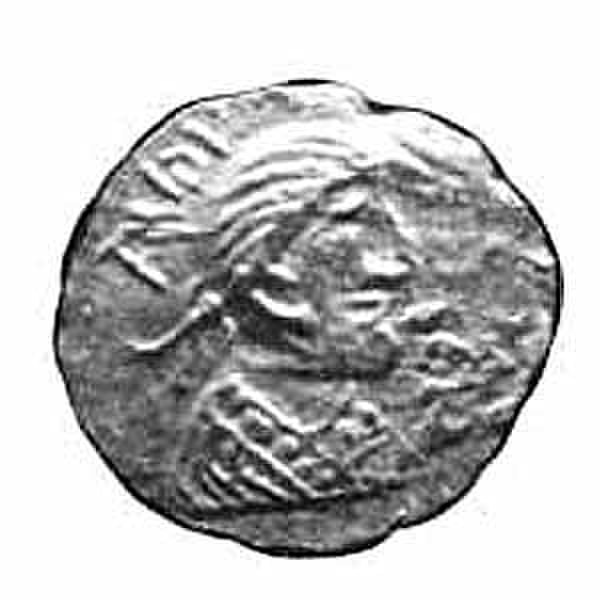Æthelberht was King of Kent from about 589 until his death. The eighth-century monk Bede, in his Ecclesiastical History of the English People, lists him as the third king to hold imperium over other Anglo-Saxon kingdoms. In the late ninth century Anglo-Saxon Chronicle, he is referred to as a bretwalda, or "Britain-ruler". He was the first English king to convert to Christianity.
Sculpture of Æthelberht on Canterbury Cathedral in England
Stained-glass window of Æthelberht from the chapel of All Souls College, Oxford
A thrymsa from the reign of Eadbald, Æthelberht's son, none of the coins are known to carry Æthelberht's name, although they may have been minted during his reign
Statue of Æthelberht with Canterbury Cathedral in the background
The Kingdom of the Kentish, today referred to as the Kingdom of Kent, was an early medieval kingdom in what is now South East England. It existed from either the fifth or the sixth century AD until it was fully absorbed into the Kingdom of Wessex in the late 9th century and later into the Kingdom of England in the early 10th century.
Roman fort wall at Regulbium
Hengest and Horsa, from A Restitution of Decayed Intelligence by Richard Verstegan (1605)
A putative early illustration of Augustine







